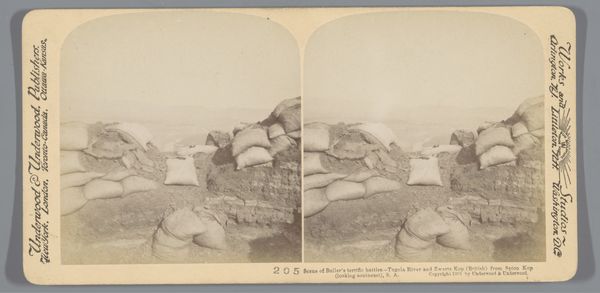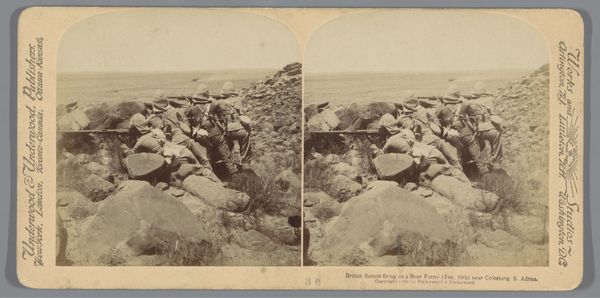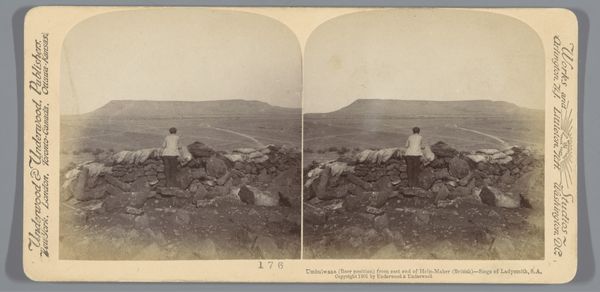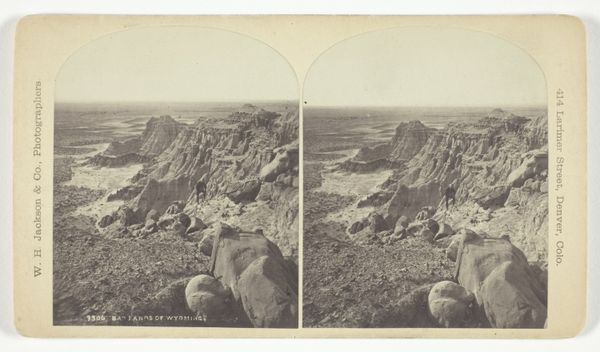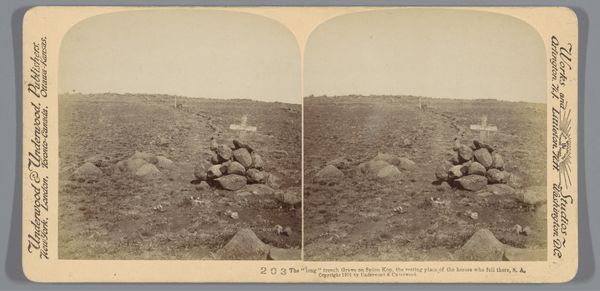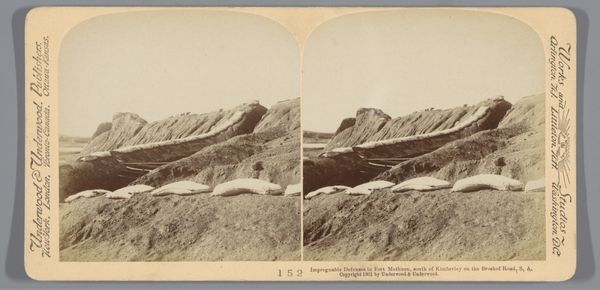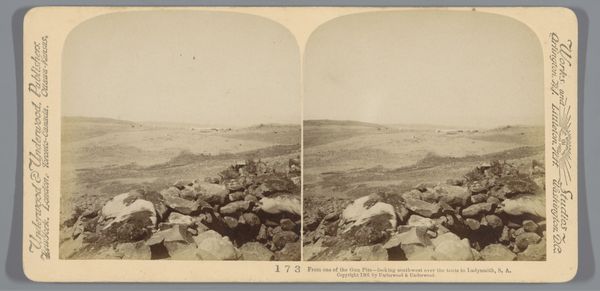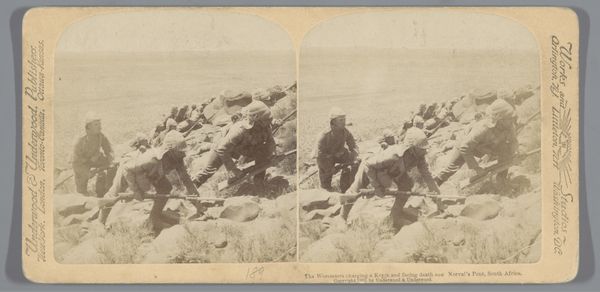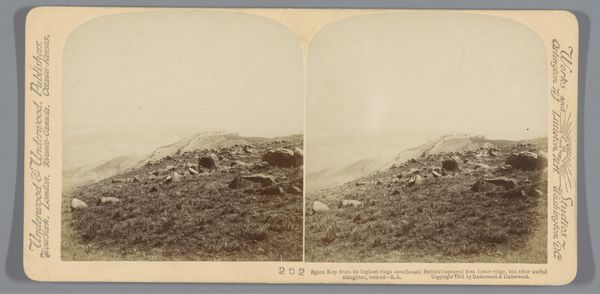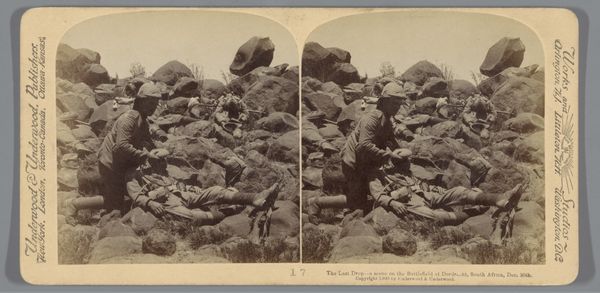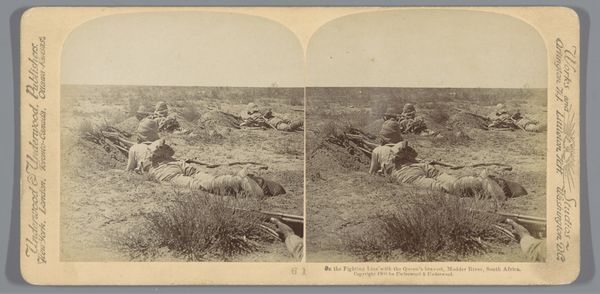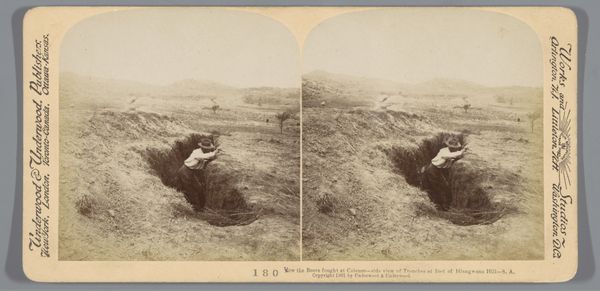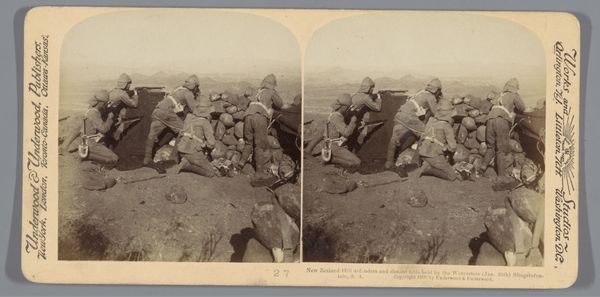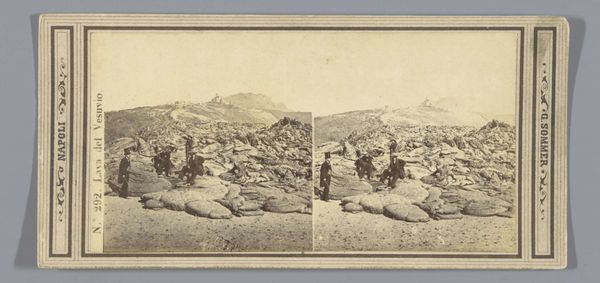
photography, gelatin-silver-print
#
aged paper
#
toned paper
#
pictorialism
#
landscape
#
river
#
photography
#
mountain
#
gelatin-silver-print
Dimensions: height 88 mm, width 178 mm
Copyright: Rijks Museum: Open Domain
Curator: I find this landscape to be almost overwhelmingly bleak, wouldn't you agree? A washed-out palette, seemingly endless view... there’s a loneliness to it. Editor: Indeed. And that feeling resonates strongly when considering the work in question, which is titled “Gezicht op de Tugelarivier en Mount Alice vanaf Spionkop,” a gelatin-silver print made around 1901 by Underwood & Underwood. These stereoscopic images were immensely popular at the turn of the century. Curator: Stereoscopic views—allowing a kind of virtual tourism. Though hardly neutral documents, were they? This vista shows the landscape around Spion Kop. We must confront this site's place in British imperial history. Editor: Precisely. This image comes to us directly from the Second Boer War, that brutal conflict over control of South Africa's resources and territory. What strikes me immediately are those makeshift fortifications in the foreground. Burlap bags and piled rocks--rudimentary defense against modern weaponry. Curator: And the single figure perched there, looking out at what? Hope? Defeat? The compositional choice to place this anonymous soldier facing away creates an interesting tension between the individual and the immensity of war and Empire. Whose story are we being asked to consider? Editor: The studios certainly catered to a popular appetite for scenes of far-flung conflict, creating these manufactured “realities”. I mean, look at how the scene has been staged— the lone soldier as an easily digestible representation of British fortitude amidst a foreign landscape. Curator: It raises complex questions of photographic agency. What did it mean to view landscapes fraught with imperial power struggles through these stereoscopes at home? We're not simply seeing the landscape, but a constructed, curated, imperial gaze. How does it shape us? What does it ask of us? Editor: These were undoubtedly potent tools for shaping public opinion about distant conflicts, offering seemingly objective views but masking deeper political agendas and a very selective narrative of a destructive colonial war. Thank you for pulling back the curtain on the photograph. Curator: Of course. And considering these power dynamics helps bring depth to an otherwise “simple” landscape.
Comments
No comments
Be the first to comment and join the conversation on the ultimate creative platform.
